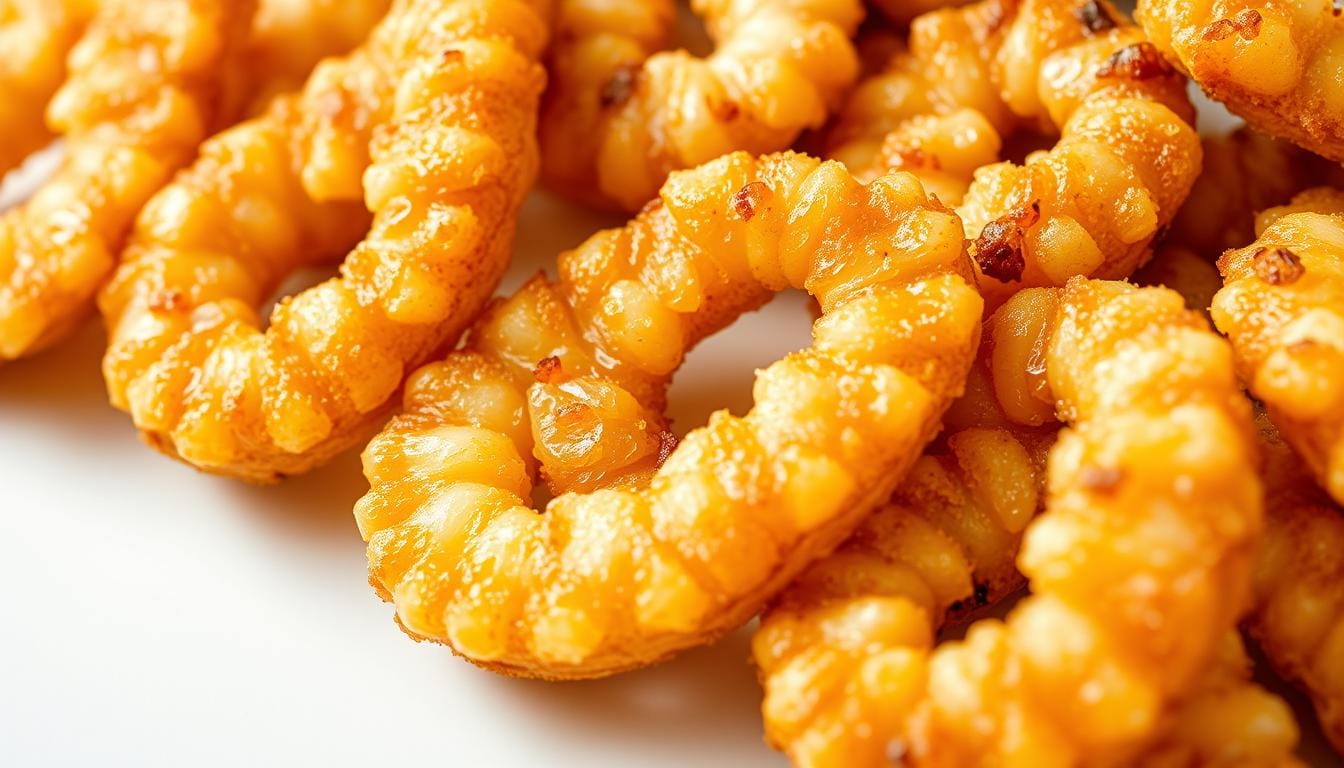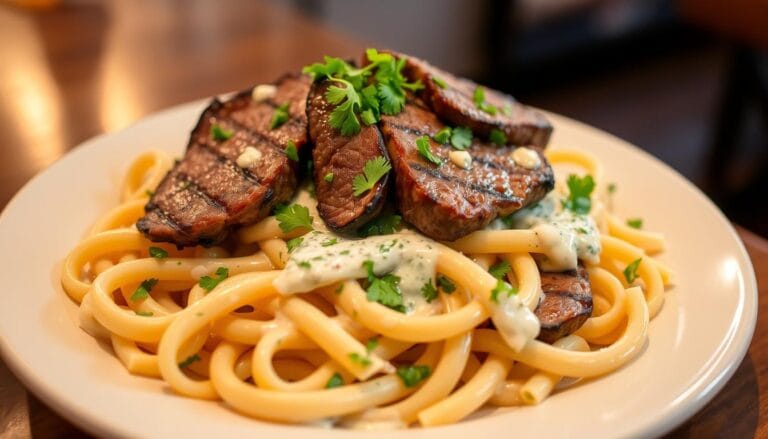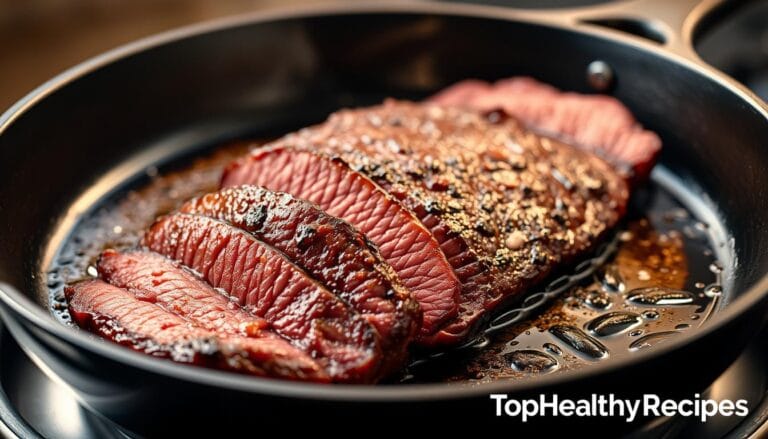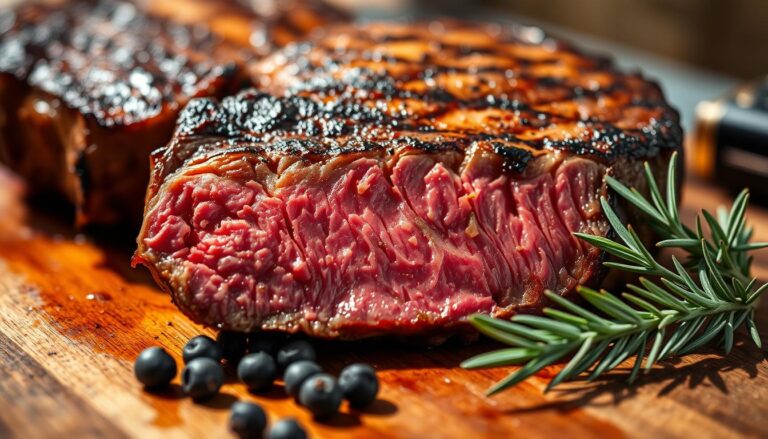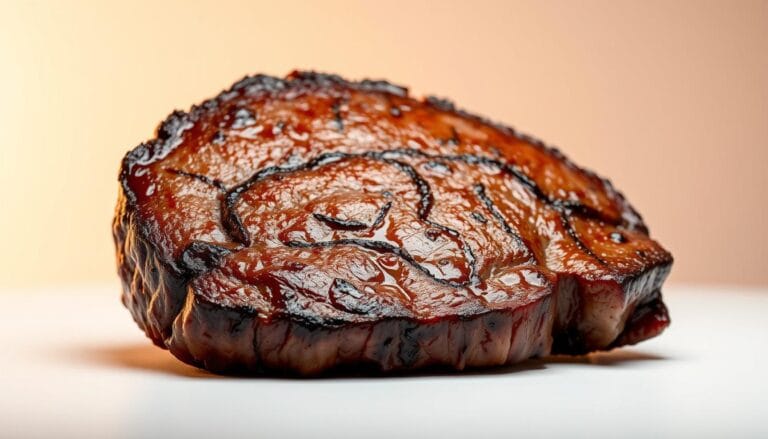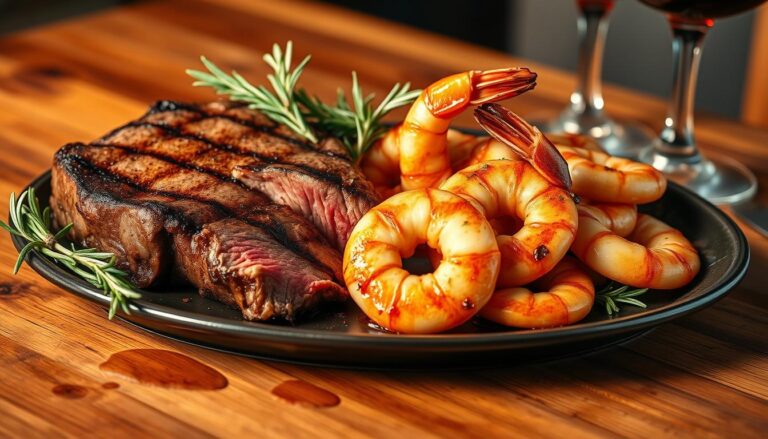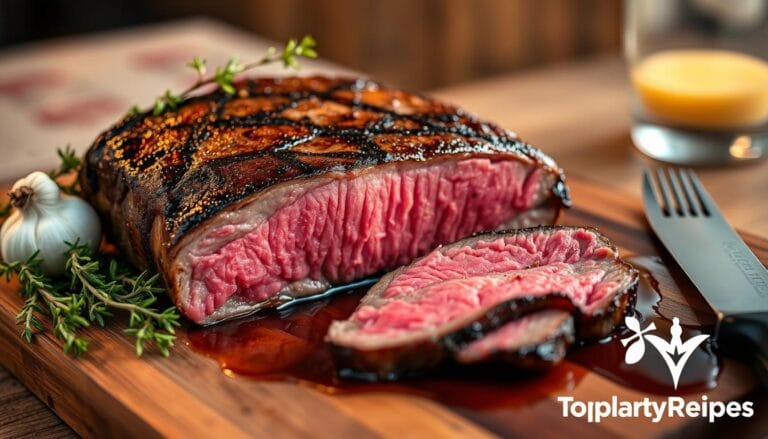How to Fry Calamari Steaks Perfectly Golden, Crispy and Delicious
Table of Contents
How to Fry Calamari Steaks Perfectly Golden, Crispy, Delicious
There’s something magical about biting into calamari that crackles with a golden crust yet stays tender inside. I’ll never forget the first time I tried recreating that restaurant magic at home. The sizzle of the pan, the aroma of garlic-infused oil, and that triumphant moment when I nailed the crunch. You deserve that moment too.
Forget rubbery seafood or soggy batter. With a few simple techniques, you’ll transform fresh squid into crispy, golden discs that outshine any diner version. The secret? It’s not about fancy equipment – your everyday skillet and basic pantry staples are all you need.
This guide cuts through the guesswork. You’ll learn why oil temperature matters more than you think, how to balance flour and cornstarch for maximum crunch, and the exact cooking time that prevents chewiness. Best part? You’re about to discover why homemade versions often taste richer and fresher than what you get eating out.
Key Takeaways
- Oil temperature control prevents greasy or undercooked results
- A cornstarch-flour blend creates the ideal crispy texture
- Pat-drying squid ensures batter adhesion
- 90-second fry time maintains tenderness inside
- Lemon wedges and dipping sauces enhance natural flavors
What Are Calamari Steaks?
Calamari steaks are thick slices of squid that add a tender yet firm texture to dishes. They come from the squid’s body, unlike the thin rings often used as appetizers. This makes them perfect for main courses.
Overview of Calamari
Calamari steaks have a Mediterranean background, where they were valued for their versatility. They are a staple in Italian frittura di calamari and Greek seafood platters. Their thickness, usually ½–1 inch, makes them great for grilling, searing, or frying without drying out.
“Squid steaks let home cooks explore beyond basic fried rings – they’re the filet mignon of the sea.”
Nutritional Benefits
This seafood choice is packed with nutrients. A 3-ounce serving offers:
- 22g protein – nearly half your daily needs
- 90 calories – lighter than chicken breast
- 30% DV vitamin B12 – supports energy levels
Low in saturated fat and mercury-free, squid steak is great for keto, paleo, or heart-healthy diets. Adding lemon can help with iron absorption.
Selecting the Right Calamari
Choosing the best calamari steaks is key to a memorable meal. Whether it’s for a weeknight dinner or a special event, picking the right squid steak is essential. Here’s what to look for to get crispy results every time.
Fresh vs. Frozen Calamari
Fresh calamari is tender but needs a good cleaning. Look for:
- Glossy, translucent flesh with no sliminess
- Whole tubes or tentacles (not pre-cut)
- A clean ocean smell – avoid fishy odors
Frozen squid steak is great for convenience. It offers:
- Pre-cleaned cuts that save prep time
- Year-round availability
- Flash-freezing at peak freshness
Looking for Quality
Here’s how to spot top-notch calamari:
- Press the flesh – it should spring back, not leave indentations
- Check for uniform color (white to light pink)
- Avoid products with ice crystals (indicates freezer burn)
Remember, quality squid steak cooks evenly and soaks up marinades well. If buying frozen, choose vacuum-sealed packages labeled “sustainably caught.”
Preparing Calamari Steaks for Frying
Getting chewy squid to taste like restaurant-quality fried calamari steaks is all about the prep. Whether you’re sticking to calamari steak recipes or trying new flavors, these steps are key. They keep your dish tender and crispy.
Cleaning the Calamari
Begin by rinsing fresh or thawed squid under cold water. Here’s what to do:
- Remove the thin, translucent membrane covering the flesh using your fingers
- Pull out the quill-shaped backbone (gladius) from the mantle
- Pat steaks completely dry with paper towels – moisture is the enemy of crispy frying
“A sharp chef’s knife makes all the difference when working with delicate seafood.”
Slicing Techniques
For even cooking in your calamari steak recipes, follow this method:
- Lay cleaned squid mantle flat on a cutting board
- Cut lengthwise into ½-inch thick steaks – this thickness balances crispiness and tenderness
- Angle your knife slightly to create uniform pieces
Pro tip: Chill squid for 15 minutes before slicing – firmer texture means cleaner cuts!
Marinating Calamari Steaks
Marinating calamari steaks brings out rich flavors and keeps them tender. It’s important to find the right balance. Too little time, and the flavors won’t develop. But too much, and it can become mushy. Let’s look at easy marinades and the best soaking time for great results.
Simple Marinade Recipes
You don’t need fancy ingredients to make your calamari steaks taste amazing. Here are three marinades that work wonders without overpowering the seafood:
- Lemon-Garlic: Mix olive oil, fresh lemon juice, minced garlic, and a pinch of black pepper. The lemon brightens the flavor, and the garlic adds depth.
- Chili-Lime: Combine lime zest, red pepper flakes, honey, and a splash of soy sauce. This mix gives a sweet-spicy flavor that’s perfect for fried calamari.
- Herb-Infused Olive Oil: Blend rosemary, thyme, and oregano into warm olive oil. Let it cool before using it to coat the steaks. It gives a fragrant, earthy taste.
Recommended Marinade Duration
15–30 minutes is the best time to marinate calamari. The acidity in citrus or vinegar works fast, so don’t marinate for more than 45 minutes. For the best results:
- Refrigerate while marinating to keep it safe
- Flip the steaks halfway to ensure even flavor
- Pat dry with paper towels before breading to avoid oil splatter
Marinating for short times means you can make this seafood dish quickly. It’s perfect for last-minute dinners or unexpected appetizers.
Choosing the Right Breading for Calamari
Breading is more than just a coating. It’s what makes your steak and calamari dishes pop. The right breading turns tender squid into crispy, golden bites. Let’s explore your options to find the perfect match for your cooking.
Types of Breading
There are three main breading styles for calamari steaks:
- Flour: Creates a light, delicate crust that lets the squid’s natural flavor shine.
- Cornmeal: Adds rustic crunch with a slightly sweet, earthy note.
- Panko: Delivers ultra-crispy layers that stay crunchy longer after frying.
| Breading Type | Texture | Best For |
|---|---|---|
| All-Purpose Flour | Light & Smooth | Quick frying (1-2 minutes) |
| Cornmeal | Gritty & Crunchy | Southern-style recipes |
| Panko Breadcrumbs | Airy & Crispy | Thick-cut steaks |
Flour vs. Cornmeal vs. Panko
Need help deciding? Here’s how these options stack up:
Flour is best for minimal breading. It fries fast and pairs well with lemon or garlic aioli. Use it for calamari steaks under ½-inch thick.
Cornmeal gives that satisfying crunch people love in seafood. Mix it 50/50 with flour to prevent it from falling off during frying. Perfect for hearty appetizers.
Panko creates showstopping texture. Press the crumbs firmly onto your steak and calamari to ensure they stick. Ideal for thicker cuts needing extra protection from high heat.
Frying Equipment You’ll Need
To fry calamari steaks perfectly, you need the right tools and ingredients. The squid is the main star, but the oil and kitchen tools are key for that crispy texture. Here’s what you need to make those delicious bites.
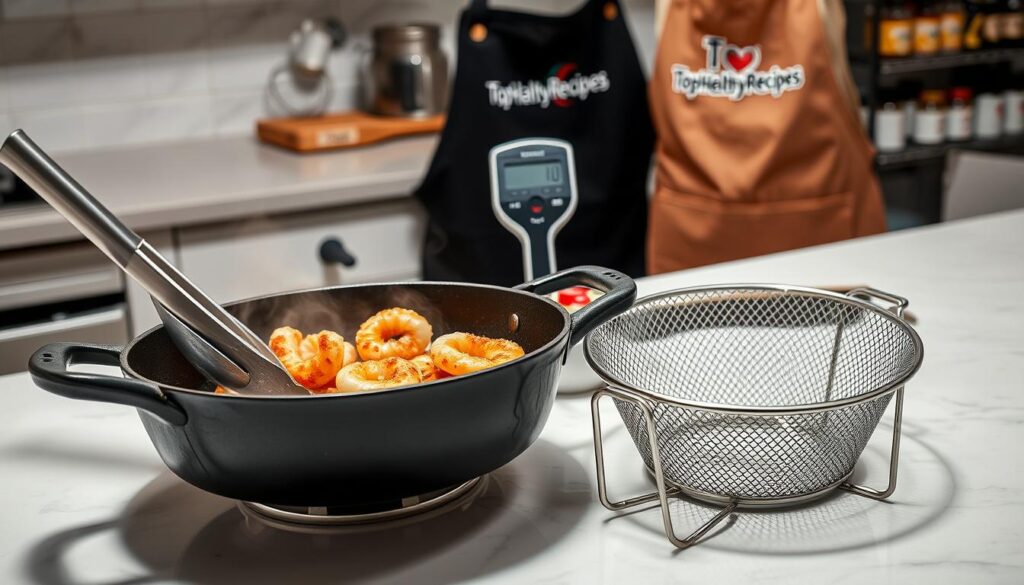
Best Frying Oils
Choosing the right oil is important for frying calamari. You want oils with high smoke points to avoid burning and keep flavors good. Peanut oil is great with a 450°F smoke point and a neutral taste.
Avocado oil (520°F) is good for those who care about health. Vegetable oil (400°F) is a budget-friendly choice.
| Oil Type | Smoke Point | Best For |
|---|---|---|
| Peanut Oil | 450°F | Neutral flavor, reusable |
| Avocado Oil | 520°F | High-heat frying |
| Vegetable Oil | 400°F | Budget-friendly option |
Cooking Utensils
Three tools make frying calamari easy. A deep cast-iron skillet heats evenly, avoiding hot spots. Long-handled tongs keep your hands safe while flipping.
A clip-on thermometer ensures the oil stays at 375°F. Don’t forget a wire rack or paper towels for draining grease.
- Heavy-bottomed pan (10-12 inches wide)
- Stainless steel tongs
- Instant-read thermometer
- Slotted spoon or spider strainer
How to Properly Heat Oil for Frying
The secret to non-soggy calamari steaks is oil temperature control. If the oil isn’t hot enough, your breading gets greasy. Too hot, and it burns before it’s cooked through. Let’s explore the science of heating oil for perfect frying.
Temperature Guidelines
To get golden calamari steaks, keep the oil between 350°F and 375°F. This range helps the breading crisp up without soaking up too much oil. Use a deep-fry thermometer to monitor the temperature in real-time. Electric skillets with temperature controls make this easier – just set it and forget it!
Different oils handle heat differently:
- Peanut oil: Best for high-heat frying (smoke point: 450°F)
- Canola oil: Budget-friendly option (smoke point: 400°F)
- Avocado oil: Premium choice (smoke point: 520°F)
Testing the Oil
No thermometer? Try the breadcrumb test: Drop a pinch of breading into the oil. If it:
- Sizzles immediately but doesn’t darken too fast → Perfect temperature
- Sinks without bubbling → Too cold
- Burns within seconds → Dangerously hot
Adjust your stove dial in small increments once the oil nears 350°F. Remember, oil temperature drops when you add food. Fry in small batches to keep the heat consistent for that restaurant-quality crunch.
Frying Calamari Steaks
Learning to fry calamari steaks right makes them crispy and golden. It’s all about timing and technique. Get it wrong, and the texture suffers. Here’s how to get it right every time.
Step-by-Step Frying Instructions
Follow this easy guide for perfect calamari:
- Heat oil to 375°F (190°C) in a deep fryer or heavy skillet.
- Dredge marinated steaks in your chosen breading, shaking off extra.
- Gently lower 2-3 steaks into the oil with tongs—don’t drop them to avoid splatters.
- Fry for 2–3 minutes per side until golden, flipping once.
- Place on a wire rack or paper towel-lined plate to drain.
Avoiding Overcrowding the Pan
Putting too many steaks in the pan is a big mistake. It lowers the oil temperature, making the calamari greasy and uneven. Here’s what to do instead:
- Work in small batches—leave at least 1 inch between steaks
- Use a large Dutch oven or skillet for better heat distribution
- Let oil return to 375°F between batches
Pro tip: Keep cooked batches warm in a 200°F oven while finishing others. This keeps them crispy without drying out.
Achieving the Perfect Crispiness
The crunch you get from biting into fried calamari steaks is key. It’s what makes it restaurant-quality perfection. The right technique and understanding of heat and timing are essential. They help keep the squid steak tender inside while making it crispy on the outside.
Tips for Golden, Crispy Texture
Here are some science-backed tips for achieving that perfect crunch:
- Double-fry for durability: Fry squid steaks for 90 seconds, then rest for 2 minutes. Fry again for 60 seconds. This creates air pockets in the breading that resist sogginess.
- Maintain oil freshness: Reused oil can lead to uneven browning. Use new oil for each batch when possible.
- Pat steaks dry before frying: Moisture can soften the breading. Blot with paper towels after marinating.
Adjusting Frying Time
Cooking time depends on three things:
- Steak thickness: ½-inch cuts need 2-3 minutes total; ¾-inch pieces require 3-4 minutes
- Oil temperature: 375°F (ideal) vs 350°F (add 30 seconds per side)
- Breading type: Panko browns faster than flour – reduce time by 20%
Look for rapid bubble reduction around the steak. This means most moisture has evaporated, and it’s almost done. Remove when edges turn honey-gold; the heat will darken them slightly after.
Serving Suggestions for Fried Calamari
Pairing your golden calamari steaks with the right sides and sauces can make your meal unforgettable. Whether you’re hosting a casual dinner or craving a seafood feast, the right combinations can enhance the dish. Let’s explore how to balance flavors and textures for a restaurant-quality experience at home.
Dipping Sauces That Shine
Dips add excitement to every bite of your steak and calamari. Here are three crowd-pleasers:
- Lemon Aioli: Creamy garlic mayo with citrus zest cuts through the richness
- Spicy Marinara: Classic tomato sauce kicked up with red pepper flakes
- Sriracha Lime Mayo: A tangy blend of heat and acidity
For a lighter option, try tzatziki or cocktail sauce. Pro tip: Serve sauces in small ramekins to prevent sogginess.
Side Dishes That Complement
Balance fried foods with fresh, bright accompaniments. Top picks include:
- Shaved fennel salad with orange segments
- Grilled asparagus with lemon butter
- Crispy garlic fries dusted with parmesan
“The contrast between hot, crunchy calamari and cool, zesty sides creates perfect harmony on the plate.”
For heartier meals, pair with saffron rice or cheesy polenta. Remember: Lighter sides let the steak and calamari remain the star.
Storing Leftover Calamari Steaks
Don’t let your crispy fried calamari go to waste—proper storage keeps it safe and tasty for later. While these seafood steaks taste best fresh, a few simple steps ensure leftovers stay golden and delicious. Let’s explore how to preserve texture and flavor while avoiding sogginess.
Proper Storage Techniques
Act quickly to store leftovers within 2 hours of cooking. Let the calamari cool slightly, but avoid leaving it at room temperature too long. Follow these steps:
- Place steaks in a single layer inside an airtight container
- Separate layers with parchment paper to prevent sticking
- Refrigerate for up to 2 days (freezing isn’t recommended)
Moisture is the enemy of crispiness. Avoid plastic wrap alone—it traps steam, making the breading limp. For extra protection, add a paper towel to absorb condensation.
Reheating Tips
Skip the microwave! It turns calamari rubbery. Instead, use these methods to revive that perfect crunch:
- Oven: Bake at 375°F for 5-8 minutes on a wire rack
- Air fryer: 3-4 minutes at 350°F delivers fast results
Lightly spritz reheated steaks with oil if they look dry. Pair them with zesty dipping sauces from your favorite calamari steak recipes to refresh the flavor profile.
Common Mistakes to Avoid When Frying Calamari
Many home cooks face challenges with calamari due to a few common mistakes. Whether you’re new to frying seafood or looking to improve, knowing these errors is key. It ensures your calamari turns out tender and golden every time.
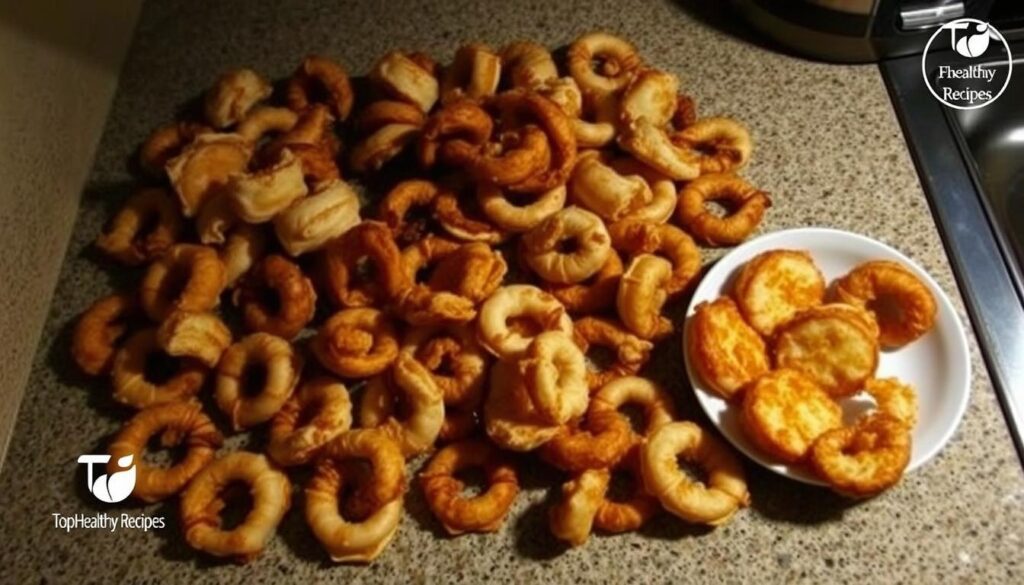
Overcooking Issues
Calamari cooks fast—in just 2-3 minutes. Overcooking makes it rubbery and tough. Use a timer and look for a pale golden color. If the edges curl too much, it’s overdone.
To avoid a rubbery texture:
- Fry in small batches for even heat
- Remove pieces immediately after they float
- Let cooked calamari rest on a wire rack, not paper towels
Incorrect Oil Temperature
Oil that’s too cool makes the breading soggy. Oil that’s too hot burns the outside. Aim for 350-375°F. Test with a breadcrumb: it should sizzle gently without smoking.
Uneven browning often comes from temperature changes. Keep these tips in mind:
| Mistake | Result | Solution |
|---|---|---|
| Overcrowding the pan | Oil cools rapidly | Fry 3-4 pieces at a time |
| Ignoring preheating time | Inconsistent crispiness | Wait 5-7 minutes after turning on the stove |
| Reusing oil multiple times | Smoky, bitter flavor | Replace oil after 2-3 batches |
Conclusion: Enjoying Your Fried Calamari Steaks
Steak and calamari dishes can taste like they’re from a restaurant. By mastering a few techniques, you can make tender squid with a crispy outside. It’s all about keeping the oil at the right temperature and frying at the right time.
Key Takeaways for Consistent Results
Use a thermometer to keep the oil between 350-375°F. This ensures even frying. Dry the calamari steaks before breading them with flour or panko.
Fry in small batches with oils like avocado or peanut. This helps prevent the calamari from getting tough. Serve it hot with lemon wedges and sauces like garlic aioli or marinara.
Expand Your Flavor Combinations
Try different spice blends in your breading. Use Old Bay seasoning, smoked paprika, or citrus zest. Pair it with sides like jicama slaw or roasted poblano rice for a unique taste.
For gluten-free options, use chickpea flour or crushed rice crackers. Quality ingredients make a big difference. Get fresh or thawed squid from places like Whole Foods Market or local seafood markets.
Share your creations on social media with #HomemadeCalamariSteaks. This way, you can inspire others. With time, you’ll find your own way to make this dish special.
FAQ
What are calamari steaks, and how do they differ from calamari rings?
Can I use frozen squid steak for frying?
How do I prevent calamari from becoming rubbery when fried?
What’s the best oil for frying calamari steaks?
Should I marinate squid steak before frying?
Can I air-fry calamari steaks instead of deep-frying?
What dipping sauces pair well with fried calamari?
How do I reheat leftover fried calamari without losing crispiness?
Why did my breading fall off during frying?
Are calamari steaks healthy?
For more cooking tips, stay connected with us. We also recommend the cookbook Skinnytaste Simple: Easy, Healthy Recipes with 7 Ingredients or Fewer
For more Recipes about Steak ?
Did You try our recipe ?
There are no reviews yet. Be the first one to write one.
